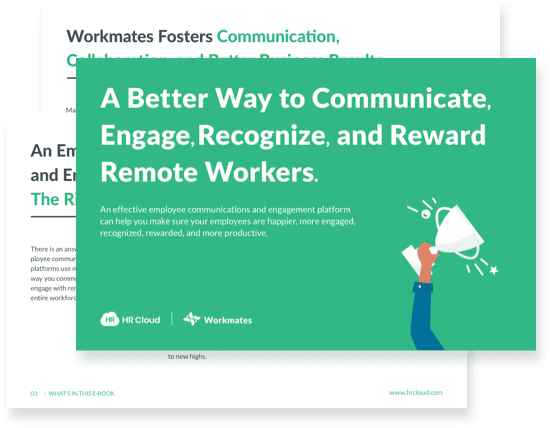5 Strategies for Transitioning Back Into the Workplace After Quarantine



 Cut onboarding time
by 60%—here's the
Ultimate Checklist
that helped do it.
Cut onboarding time
by 60%—here's the
Ultimate Checklist
that helped do it.

It’s hard to believe, but we’re now going on nearly six months of some type of self-quarantined work from home (along with our spouses, kids, roommates, and even pets). It may have taken some time to adapt, but for the most part, we succeeded in working remotely.
Yet now the tides are changing again, both as schools and businesses all consider various reopening strategies.
This situation may lead to more questions than answers. For example, does your company have a plan to accommodate the “new normal?” If so have you shared it with the workforce, or similarly, held discussions with employees to let them know what to expect?
If you don’t know the answers to these questions, here are five strategies to help transition back into a traditional workplace as well as ways you can fully support your staff.
1. Prepare employees for your reopening strategy
While reopening may not be as abrupt as the initial transition to remote work was, chances are good that things will still move quickly as more state governors, school districts, and local officials give their approval. Your company will have to decide how to move forward. If you don’t have a reopening strategy, take the time to formulate one now. Here are some questions to ask yourself:
-
Do you plan to continue a remote-work model?
-
Will you need to use a hybrid model, with some tasks being done onsite and others remotely?
-
Is your workplace equipped to bring everyone back with safe distancing modifications?
Once you have a strategy in place that seems feasible, let your employees know what the plan is, so they can assess their individual situations, such as child care requirements, transportation, or other details. Whatever workplace model you choose, you’ll need to simultaneously protect your business and support your employees.
2. Determine any staffing cuts and communicate them
The global economic fallout from the COVID-19 pandemic is an ugly story yet to be fully told. While experts are making some dire projections, no one is really sure how it will develop, but rough roads may lie ahead for businesses and individuals alike.
If the company is going to have to cut personnel or salaries to stay afloat, it’s important to communicate this to your employees so they can plan appropriately. Many will want to launch job searches, cut home expenses, examine their credit scores to see if they have access to borrowing funds with favorable terms, or make other financial arrangements. Give them the greatest opportunity possible to take care of themselves and their families.
Additionally, if employees’ roles will be changing as the result of cuts or realignments, be sure you communicate this to your employees and give them the support they’ll need during any transitions.

To learn even more about managing remote teams and keeping employees working at home highly engaged, download our ebook now.
Download now3. Plan for necessary infrastructure and policy changes
You may need to revamp your physical workspace to meet your state’s or municipality’s requirements for reopening. This might include reconfiguration, physical restructuring, or installing floor markers or plexiglass barriers. Don’t wait until the last minute to start making these changes; the transition may take longer than you think to achieve compliance.
Establish and communicate health-oriented policies (i.e., taking temperatures or cleaning procedures) to employees and customers alike. Outline the new responsibilities and expectations for both your company and its employees. Remember to order enough personal protective equipment for your employees’ use: include a stock of masks, disinfectant wipes, spray disinfectants, hand sanitizer, and soap.
Be sure employees are equipped to enforce any directives that customers will have to follow to keep your business compliant, such as waiting outside your facility to limit customer numbers inside, maintaining social distancing and mask-wearing while inside, etc. For everyone to remain safe and healthy, it’ll be a team effort.
4. Offer employees tips and perks
Many workers who had to go on unemployment have been using up their savings during the pandemic and could use financial assistance or at least resources and information to help them get by.
-
Recognize employees for all their hard work and what they’ve endured while working at home.
-
Reward them with points that they can redeem for gift cards, corporate items, or other “thank you” gifts.
-
Evaluate life insurance plans and see if you can identify a discounted group plan to help employees feel more secure about their families’ futures.
-
Many schools may start with distance learning in the fall, which means many employees will need help with child care. Explore on-site options, offer financial assistance for child care, or allow flexible work schedules to support your employees.
-
After spending 24/7 at home for three months, many of your employees’ homes likely experienced a lot more wear and tear than they would have under normal circumstances. Suggest a good home warranty program to make sure they’re covered for problems not included in their homeowners’ insurance.
-
Offer training or education opportunities to help employees feel more confident about being able to maintain their marketability in an economic downturn.
Offering your employees a variety of perks or helpful ideas will go a long way toward boosting morale and confidence in a time where many feel frustrated by the ripple effects of the coronavirus pandemic.
Franchise Owner of Interim HealthCare SLC
“Interim Healthcare SLC needed HR technology, and we’re pleased with the results we’ve gained from HR Cloud’s solutions for recruiting, onboarding, and employee engagement. Yet it’s an opportunity for all Interim franchises. It would be so great if each franchise owner could implement similar solutions to replace legacy systems that might not work as well as they should.”
5. Remember your customers
Your customers are your company’s lifeblood, and you’ll want to keep this foremost in your mind (as well as your employees’ minds) as you formulate your reopening plans. Remember that many people are struggling financially, so it won’t pay to be too aggressive in your sales approach. Some customers will be actively looking to purchase, while others might regard your offerings more as “wish list” items at this time.
But no matter what stage you’re approaching in the sales funnel, it’s always important to keep up consistent communication with your community. Send thoughtful emails, handwritten notes, or useful promotional gifts to maintain strong relationships with clients (these will prove to be well worth the investment). If you’re good to your customers — even when they’re not buying — they’ll return the favor when they’re financially able.
Moving into a post-COVID-19 era will almost certainly be unlike anything we’ve experienced before. The better prepared you are to transition to the “new normal,” the more successful you’ll be when it happens.
Additional Resources:
Protect you business with Cerity - Workers' Comp Insurance
Learn how to start your own start-up
Chief Executive Officerator of Medlinks Cost Containment, Inc. and Medlinks Staffing, LLC.
“Our staff has praised the increased communications level Workmates delivers. We use it to communicate important project matters and give staff specific ‘kudos’ or even recognize their birthdays. More importantly, we use Workmates to clarify important project details that needed rapid dissemination among the entire team.”
Workmates
For even more information on employee communication, collaboration, and engagement, we invite you to learn more about our Workmates employee experience platform. Sign up for a free, no-obligation demo to see how Workmates is changing employee management, in the new normal and beyond.
About Author: This article is written by a marketing team member at HR Cloud. HR Cloud is a leading provider of proven HR solutions, including recruiting, onboarding, employee communications & engagement, and rewards & recognition. Our user-friendly software increases employee productivity, delivers time and cost savings, and minimizes compliance risk.
Keep Reading
45 Boss Day Messages That Actually Mean Something (2026 Guide)
When is Boss Day 2026? Mark your calendar for October 16, 2026 — the annual opportunity
Birthday Wishes for Coworkers: 50+ Messages That Build Workplace Connection
A coworker's birthday isn't just another calendar date—it's a meaningful opportunity to
Embracing Diversity: Recognizing Different Cultures in the Workplace
Workplaces today reflect the incredible diversity of the world around us. People bring
Like What You Hear?
We'd love to chat with you more about how HR Cloud® can support your business's HR needs. Book Your Free Demo

Build a Culture of Recognition. Boost Engagement. Guaranteed.
Workmates empowers employees to stay informed, connected, and appreciated—whether they’re on the front line, in the office, or remote. Recognition drives 12x higher engagement.Trusted by industry leaders in every sector




Cut Onboarding Costs by 60%.
Take the confusion and follow-ups out of onboarding with automated workflows, digital forms, and structured portals—so new hires ramp faster 3X quicker.Trusted by industry leaders in every sector




